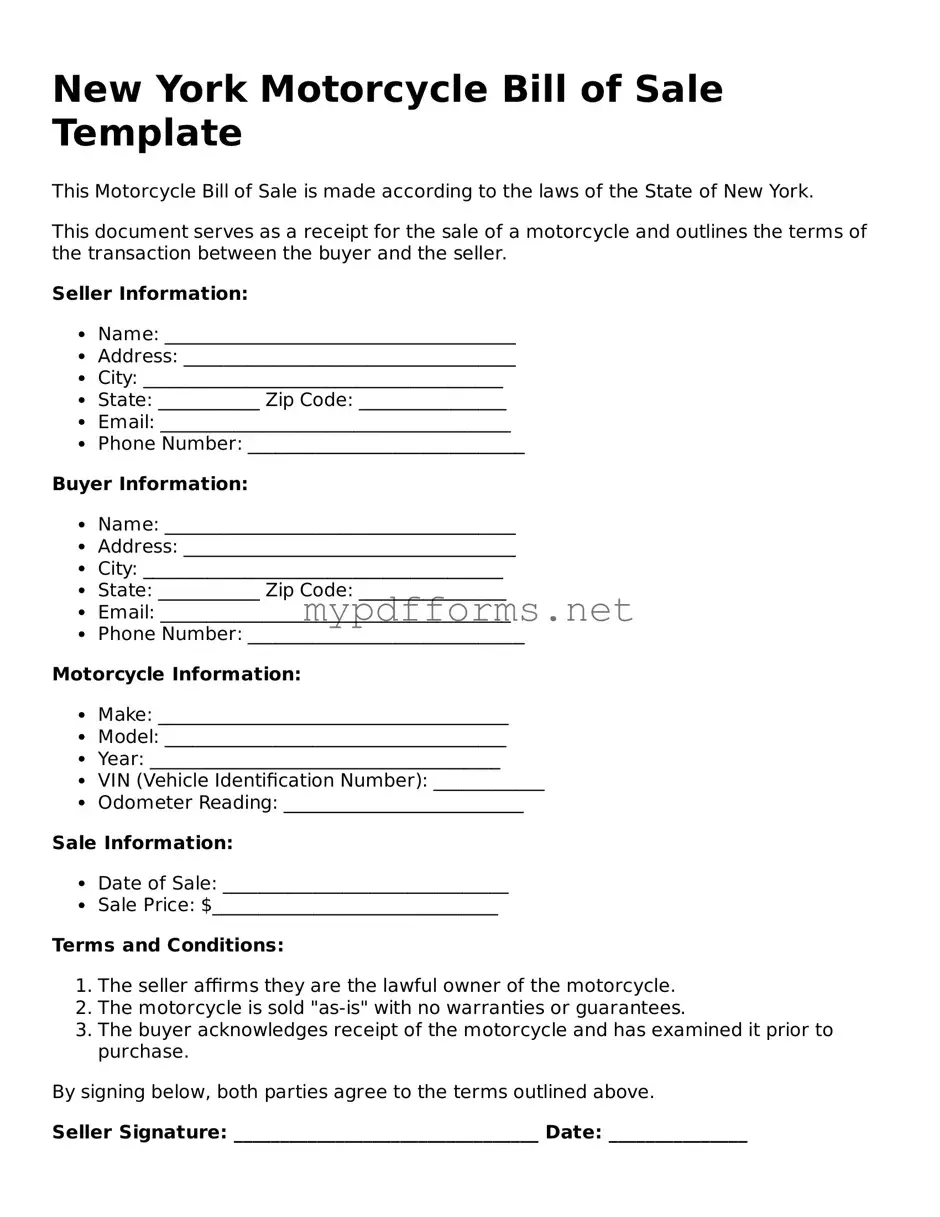The New York Vehicle Bill of Sale serves a similar purpose to the Motorcycle Bill of Sale. Both documents are used to transfer ownership of a vehicle from one party to another. They include essential details such as the buyer's and seller's names, addresses, and the vehicle's identification number (VIN). While the Motorcycle Bill of Sale focuses specifically on motorcycles, the Vehicle Bill of Sale encompasses all types of vehicles, including cars and trucks, making it a broader document for vehicle transactions.
For those seeking guidance on obtaining the documentation necessary for vehicle sales, this essential resource on the Motor Vehicle Bill of Sale is invaluable. You can explore more details in our comprehensive guide to the Motor Vehicle Bill of Sale.
The Boat Bill of Sale is another document that shares similarities with the Motorcycle Bill of Sale. Just like the motorcycle form, it is utilized to officially record the transfer of ownership of a boat. This document also includes pertinent details such as the names of the parties involved, the boat's identification number, and the sale price. Both documents serve as proof of ownership and can be essential for registration and titling purposes.
The Trailer Bill of Sale functions similarly to the Motorcycle Bill of Sale by documenting the sale and transfer of ownership of a trailer. This form includes similar information such as the buyer's and seller's details, the trailer's VIN, and the sale amount. Both documents are crucial for legal ownership and can be used for registration with state authorities.
The ATV Bill of Sale is another related document. It is specifically designed for the sale of all-terrain vehicles. Like the Motorcycle Bill of Sale, it captures the necessary information about the buyer and seller, the vehicle's details, and the sale price. This document is vital for ensuring that the transaction is legally recognized and that the new owner can register the ATV appropriately.
The Snowmobile Bill of Sale is akin to the Motorcycle Bill of Sale in that it facilitates the transfer of ownership of a snowmobile. Both documents require similar information, including the buyer's and seller's names, addresses, and the vehicle's identification number. The Snowmobile Bill of Sale serves the same purpose of providing proof of ownership and is important for registration and titling.
The Personal Watercraft Bill of Sale is another document that parallels the Motorcycle Bill of Sale. It is used to transfer ownership of personal watercraft, such as jet skis. This form includes essential details similar to those found in the Motorcycle Bill of Sale, such as the names and addresses of the parties involved, the watercraft's identification number, and the sale price. Both documents are crucial for establishing legal ownership and facilitating registration.
The Farm Equipment Bill of Sale is similar in function to the Motorcycle Bill of Sale, as it records the sale of agricultural machinery. This document includes buyer and seller information, a description of the equipment, and the sale price. Both documents serve to formalize the transaction and provide proof of ownership, which can be important for future sales or financing.
Finally, the General Bill of Sale is a versatile document that can be used for various types of personal property transactions, including motorcycles. It captures the essential details of the sale, such as the buyer's and seller's information, a description of the item being sold, and the sale price. While it may not be specific to motorcycles, it fulfills a similar purpose in documenting ownership transfer and providing a record of the transaction.
